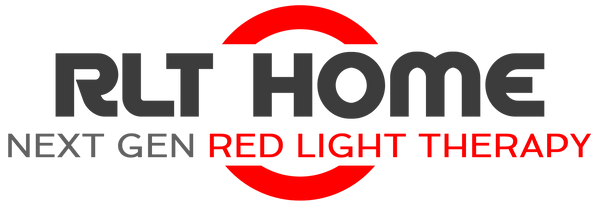810nm Near-Infrared: Deep-Tissue & Brain Healing
Photobiomodulation (PBM) at 810nm delivers near-infrared light that can reach deeper targets than visible red. By acting on mitochondrial cytochrome-c oxidase and downstream nitric-oxide/ROS signaling, 810nm supports cellular energy, blood flow, and repair in muscles, joints, nerves, and the brain (transcranial PBM). High-output LED red light therapy panels make it practical and non-invasive for at-home use focused on performance, pain, recovery, and cognitive support.
Table of Contents
Research Summary (Human-focused, 810nm): From our curated dataset of 287 studies:
- Very successful: 144 (50%)
- Somewhat successful: 84 (29%)
- No effect: 59 (21%)
Overall success: ~79% (very + somewhat). Outcomes are dose- and protocol-dependent.
Bioequivalent Wavelengths: 800–830nm
810nm sits inside the classic NIR “window” (≈800–830nm). When dose is matched, 808/810/820/830nm often yield comparable biological effects due to overlapping chromophore absorption and similar tissue optics. Compared with 660nm, 810nm scatters less and penetrates deeper - useful for muscles, joints, peripheral nerves, and transcranial targets.
Conditions Benefiting from 810nm
- Brain & cognition: attention, working memory, executive function, post-concussive symptoms [1][5]
- Mood & stress: symptom improvement in small trials/series with prefrontal tPBM [2][6]
- Muscle & performance: DOMS reduction and strength preservation around training [7]
- Tendinopathies & OA: pain/function signals in lateral elbow and knee OA when dosed over weeks [9][10]
- Spine pain: adjunct support in neck and low-back programs [12][13][14]
Applications in Brain & Cognition
Transcranial 810nm (prefrontal placements) has been associated with improvements in attention/working memory and faster psychomotor performance. Effects often appear within minutes to hours and can persist beyond the session window [1][5].
Cognitive Rehabilitation Adjunct
tPBM paired with cognitive rehab reported greater gains vs. rehab alone on several executive-function measures in adults [1].
Mood & Stress
Repeated prefrontal tPBM sessions (multi-week) showed reductions in depressive symptoms and perceived stress in small clinical cohorts [2][6].
Traumatic Brain Injury (symptom support)
Human series/trials report improvements in sleep, headache, and executive function in persistent post-concussive presentations after multi-week tPBM programs [3][4].
Applications in Muscle, Joint & Pain
Because 810nm reaches deeper than red, it’s frequently used for large muscle groups and joints.
Exercise Recovery
Pre-/post-exercise 810nm was associated with reduced DOMS and better strength retention in trained individuals when energy density and timing were optimized [7].
Tendinopathy & Knee Osteoarthritis
In lateral epicondylalgia and knee OA, protocols delivered several times weekly over weeks reported pain reduction and functional improvement vs. controls or exercise alone [9][10].
Neck & Low-Back Pain
Trials using NIR PBM as an adjunct reported improvements in pain and range of motion in neck and chronic low-back programs, especially when combined with movement-based rehab [12][13][14].
Applications in Metabolism & Circulation
Human data suggest NIR PBM can support local perfusion and oxygen availability in target tissues during recovery phases; users often report improved perceived energy with consistent dosing. (General rationale supported across the above exercise and pain trials.)
Applications in Surgical & Dental Recovery
Dental Grafting (Adjunct)
Adjunct PBM around free gingival grafting reported improved clinical parameters vs. standard care alone, suggesting a role in early-stage recovery protocols [15].
Choosing an LED Device for 810nm
RLT Home panels in the Total Spectrum series include high density of 810nm alongside 630/660/830/850/1064nm for full depth coverage.
- Adequate irradiance at working distance (clinically relevant dose in minutes, not hours)
- Uniform LED density for large areas (thighs, back, shoulders)
- Pulsing options (0-5000 Hz commonly used in tPBM literature) and continuous modes or use no pulse
- Session controls for repeatable dosing (time, cadence, weekly frequency)
- Low flicker, low EMF and precise wavelength calibration
Safety & Dosing Notes
810nm shows a favorable safety profile in human studies; most side effects are mild and transient (warmth, brief redness). Effects are biphasic: too little is ineffective; too much can blunt benefits. Start conservatively, increase gradually, and keep frequency consistent. For detailed instructions on the best practices, refer to our official Total Spectrum Usage Guide.
- Seek clinical guidance if pregnant, photosensitive, on photosensitizing meds, or under active oncology care.
- For transcranial use, avoid direct eye exposure and keep sessions within conservative time windows.
- Use as an adjunct to, not a replacement for, standard medical care.
References
- Comparative Effects of Cognitive Rehabilitation + tPBM
- Repeated Transcranial Photobiomodulation (multi-week) and Mood
- Infrared PBM in Traumatic Brain Injury (human)
- LLLT in Progressive Neuro Disorders (human)
- tLLLT and Cognitive Performance/Alertness
- Transcranial PBM and PTSD/Stress-Related Symptoms
- PBM Before Strenuous Exercise: DOMS/Performance
- Class IV Therapeutic Laser (clinical effectiveness)
- PBM + Eccentric Exercise for Lateral Elbow Tendinopathy
- PBM as Adjunct in Knee Osteoarthritis
- Influence of Various Laser Methods on Musculoskeletal Pain
- Combination Therapy Including PBM for Neck Pain
- LLLT in Chronic Low Back Pain (human)
- Deep Tissue Laser Therapy for Low Back Function
- Free Gingival Graft with PBM (adjunct outcomes)







